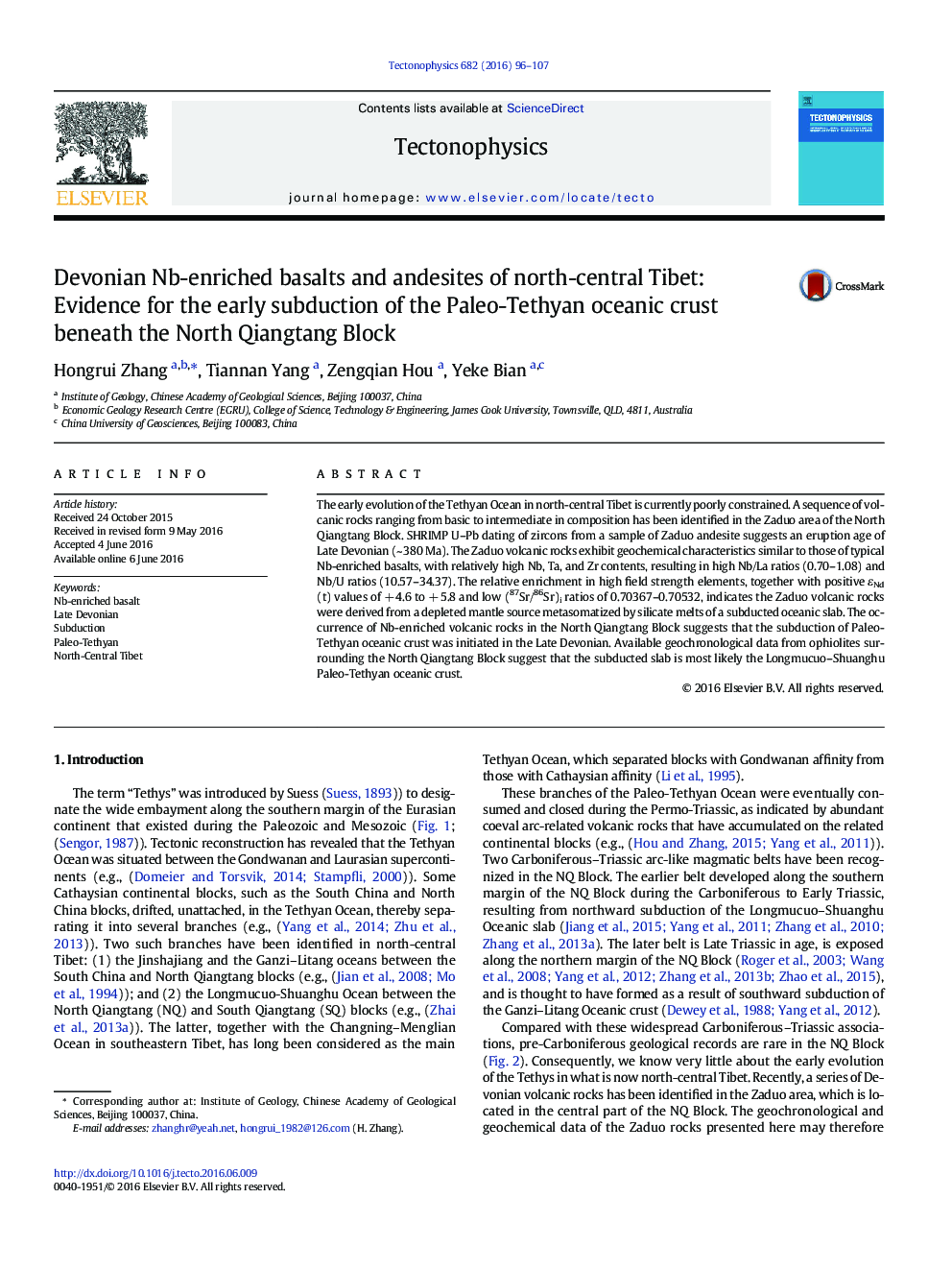| Article ID | Journal | Published Year | Pages | File Type |
|---|---|---|---|---|
| 4691306 | Tectonophysics | 2016 | 12 Pages |
•A series of Devonian volcanic rocks were identified in the Zaduo area of the northern Qiangtang block, north-central Tibet.•These rocks are identified as Nb-enriched basalts and andesites derived from a depleted mantle source.•The subduction of the Paleo-Tethyan oceanic crust beneath the Northern Qiangtang block was initiated in the Late Devonian.
The early evolution of the Tethyan Ocean in north-central Tibet is currently poorly constrained. A sequence of volcanic rocks ranging from basic to intermediate in composition has been identified in the Zaduo area of the North Qiangtang Block. SHRIMP U–Pb dating of zircons from a sample of Zaduo andesite suggests an eruption age of Late Devonian (~ 380 Ma). The Zaduo volcanic rocks exhibit geochemical characteristics similar to those of typical Nb-enriched basalts, with relatively high Nb, Ta, and Zr contents, resulting in high Nb/La ratios (0.70–1.08) and Nb/U ratios (10.57–34.37). The relative enrichment in high field strength elements, together with positive εNd(t) values of + 4.6 to + 5.8 and low (87Sr/86Sr)i ratios of 0.70367–0.70532, indicates the Zaduo volcanic rocks were derived from a depleted mantle source metasomatized by silicate melts of a subducted oceanic slab. The occurrence of Nb-enriched volcanic rocks in the North Qiangtang Block suggests that the subduction of Paleo-Tethyan oceanic crust was initiated in the Late Devonian. Available geochronological data from ophiolites surrounding the North Qiangtang Block suggest that the subducted slab is most likely the Longmucuo–Shuanghu Paleo-Tethyan oceanic crust.
